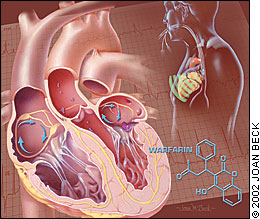
Am Fam Physician. 2002;66(2):185

The article on page 297 by Michael Pignone, M.D., M.P.H., and Bernard Levin, M.D., represents the first of a new type of clinical review article in AFP that provides a structured presentation of the evidence supporting clinical recommendations. The article, entitled “Recent Developments in Colorectal Cancer Screening and Prevention,” exemplifies the American Academy of Family Physician's Annual Clinical Focus (ACF) on cancer and also represents AFP 's focus on evidence-based medicine (EBM). You'll notice that this article displays on its cover page a new AFP banner and logo, which incorporate the “EBM” acronym and the tag “Focus on Evidence.” The circle surrounding the EBM letters is intended to suggest the systematic narrowing of research findings to clearly focused, evidence-based recommendations that physicians can apply in their practices; hence, the focus on evidence.
The article on colorectal cancer reviews recommendations drawn from a systematic review of the evidence on colorectal cancer screening conducted by the U.S. Preventive Services Task Force (USPSTF). The article includes several new elements that organize specific recommendations and identify the quality of evidence behind them. In addition to the evidence labeling system that was introduced in AFP earlier this year (see page 190), the article contains a “Data Sources” section that describes how the USPSTF conducted its systematic review of the literature, a “Findings” section that contains clinical recommendations along with a detailed description of the supporting research, and an “Evidence-Based Medicine Summary” that collects the recommendations and the strength of evidence supporting them into an easy-reference table.
The article follows a format designed by the medical editors of AFP and described in the piece “How to Write an Evidence-Based Clinical Review Article” (Am Fam Physician 2001;65:251–8). Jay Siwek, M.D., AFP's editor, has invited authors to contribute clinical review articles that use a structured approach to presenting evidence gathered from systematic reviews of the literature by authoritative sources. Examples include the USPSTF systematic reviews, the BMJ Publishing Group's Clinical Evidence series, and the reviews of the Cochrane Collaboration. Authors interested in submitting such reviews should consult AFP's “Information for Authors” for more details. The guidelines for authors are periodically updated and are available online (www.aafp.org/afp/authors).
This year the AAFP has created a separate category of CME designated as evidence-based (EB), as described on page 200 in an editorial by Timothy Kimoto, M.D., chair of the Commission on Continuing Medical Education (COCME), and Nancy Davis, Ph.D., director of the COCME. It is important to note that physicians are not required to earn a designated number of EB CME credit hours, and it is not necessary for members to label credit hours as EB CME for reporting purposes. The advantage of EB CME is that physicians participating in these activities will be assured that the practice recommendations given are based on systematic reviews by approved sources (www.aafp.org/cme/accreditation/CMEAindex.xml). Activities designated as EB CME will bear the following logo: